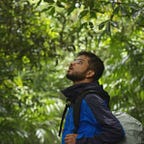Ganjam Model of conservation: A story of co-existence
For a few weeks in the winters every year, Bhetnoi village comes to life, with tourists flocking from various places to catch a glimpse of the Blackbuck, ‘krushnasara mruga’ (meaning ‘the deer that is the charioteer of Lord Krishna’), as it is known in these parts. Nestled in the northern Eastern Ghats, Bhetnoi is one of the 70 odd villages in Aska town of Ganjam district that harbour Odisha’s last refuge for the Blackbucks.
Blackbucks are the lone representative of the antelope genus Antilope. They presently occur only in the Indian subcontinent, with India being home to 95% of the global population. A small population survives in the terai ecosystems of Bardia National Park in Nepal, and a captive population exists in Pakistan, where they are extinct as a free ranging species. The Wildlife Protection Act (1972) lists it in Schedule I, while the Red Book classifies it as ‘Near Threatened’.
The Blackbuck is an iconic species of India’s arid to semi-arid grassy plains. It used to be the main prey of another species in news recently, the Cheetah. A mainstay in the Indian culture, Blackbucks are a sacred animal in Hindu texts, associated with different dieties. Mughal and Rajput paintings depict Blackbucks being chased by Cheetahs. They generally thrive in agricultural landscapes and avoid hilly terrain. Presently about 40,000 Backbucks are found in 13 Indian states, but the numbers of Blackbucks have reduced by almost 99%, with the different populations being isolated in fragmented grassy pockets now. This is where conservation stories like that in Aska are of utmost importance.
Aska has about 8000 Blackbucks today, almost 20% of India’s population. The habitat of the Blackbucks doesn’t come under any protected area. But, in the last decade, the numbers have multiplied almost 8 times, a result of decades of conservation efforts by the local communities who revere and protect them. They are considered harbingers of a good crop, and the locals believe droughts have spared the region since the population of blackbucks started increasing. The animals roam around freely, and are not harmed even if they graze the village crops.
The Odisha State Forest Department has kept a distance from Blackbuck conservation, providing only hand-holding support to the community. There are no plans for legal protection of the area, but the villagers are given compensation for crop damage and taking care of injured blackbucks. The locals also benefit from the tourism prospects of the site. The Aska Forest Range Office has a treatment facility for injured Blackbucks. The main threats are attacks from feral dogs and road accidents. The Forest Department has installed a four-storey watchtower to monitor Blackbuck populations, which doubles up as an observation deck for tourists. The department has also leased private land in the villages to grow fodder crops and create salt licks for Blackbucks, in a bid to minimise crop raiding incidents.
Ungulates like Blackbucks require large home ranges and have heavy dietary requirements due to their herd size. Hence, they are among the species most affected by fragmentation of habitats and conversion of grassland patches to agricultural fields. This also increases the incidents of crop raiding, when the animals are left without their primary fodder species. Death of blackbucks in the IIT Madras campus recently, have been attributed to starvation due to conversion of grasslands to manicured lawns of Mexican grass. The ‘Ganjam model of Blackbuck protection’ in Aska, is thus a landmark community based conservation model. In Rajasthan, the Bishnois associate the identity of their tribe with the Blackbuck and hence protect them. Aska, however, is unique because villages from the entire landscape, irrespective of their caste and background, collectively protect the animal.
Grasslands have been declared as the ecosystems facing the highest degree of imminent threat, more so than even tropical rainforests and coral reefs. Many of India’s most threatened species — Great Indian Bustard, One-Horned Rhinoceros, Indian Wild Ass, Nilgiri Tahr , Hangul— are grassland habitat specialists, and encroachment and fragmentation leading to diminishing, degraded habitats is the prime reason for decline in their numbers. In this scenario, protection of refuge pockets like Aska are critical for long term survival of grassland species.
